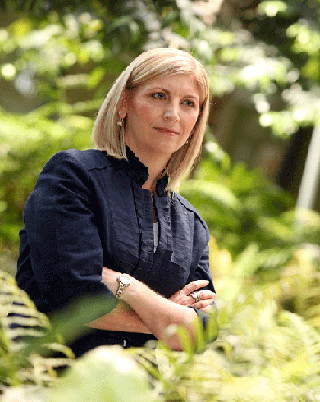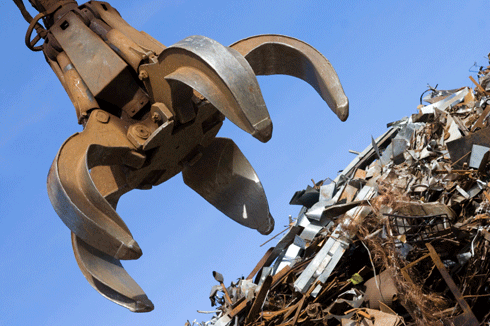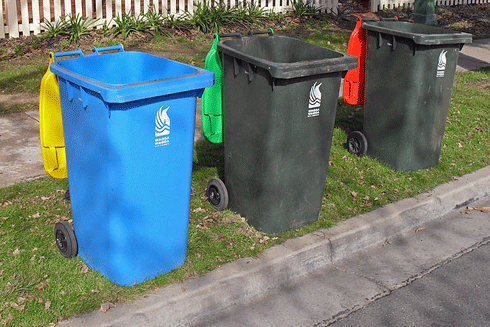
|
Published: 21 January 2013
Bronwyn Harch: using maths to solve the planet’s big issues
The Chief of CSIRO Mathematics, Informatics & Statistics, Dr Bronwyn Harch, talks to ECOS about her passion for using maths to study the environment, the challenges of her new role as CSIRO’s maths science leader, and her mission to inspire the next generation of multi-disciplinary scientists.

|
|
Dr Bronwyn Harch: ...I want our staff not just to say ‘Hi, I’m a mathematician’ but ‘Hi, I’m working on global food security using maths’. Credit: Kaylene Biggs
|
It was the 1980s, and environmental science was popular. Bronwyn Harch said to herself: ‘I need to get an edge – what is it?’ She had just completed a degree in environmental science (and teaching), and also enjoyed mathematics. She began to wonder: ‘Is there a career where I can combine the two?’. She realised the edge she was looking for was the interface between maths and the environment. It was the start of a fascinating career bringing the rigour of mathematics to ‘softer’ disciplines.
Even with your strong environmental background, you have made mathematical science a strong focus in your career. Can you describe the role that maths plays in research?
I consider mathematics to be a language of research that enables people from different disciplines to speak together. Whether they are environmental or agricultural scientists, they all need mathematical methods to look for patterns in their data and to come up with the required evidence to answer their questions.
Research is all about asking questions, and one of the major contributions from mathematics is generating and integrating data in a robust way, so you can come up with insights and make decisions.
After 17 years with CSIRO, you have taken on the role as Chief of CSIRO Mathematics, Informatics and Statistics (CMIS). What are some of your goals and aspirations for this division?
Within CMIS currently we have this mantra that I really believe in – we need to have the right people, doing the right science, achieving the right impacts. I want our division (CMIS) to be the ‘best in class’ in the way we apply maths and statistics in areas as diverse as biotechnology, finance, mineral processing, materials design, infrastructure, transport and of course the environment. Often the mathematical science applied in health research can be used for considering environmental issues, and likewise used when considering issues related to the mining or manufacturing sectors. We actually catalyse a lot of innovation because we can see the patterns across different sectors. Our innovation can be as simple as taking ideas from how we analyse things in one industry to another.
I am really keen to help Australian mathematicians and statisticians stand up and be proud of their contributions to multidisciplinary research. I want to make sure that people from the mathematical sciences are at the table when a team of scientists gather to first look at a challenge.
Most environmental science students don’t seem to focus on maths. How do you hope to get students to start thinking seriously about maths as a career option?
I think the current generation of students will probably end up having many different trajectories as they form their careers. So the challenge for them will be how to create forward moving trajectories and not continually needing to reinvent themselves.
Consequently people will need to look for opportunities that provide for ‘career lattices,’ rather than the traditional ‘career ladders.’ When people make a career choice, you want to be able to have the option to move sideways as well as up.
Through my experiences, I see that mathematical sciences give you opportunities to operate confidently through a career lattice, because underlying many of today’s challenges is the need to consider patterns and trends, whether its agriculture, health or the environment. In any one month I could be talking to the insurance industry about statistical analysis, and the next day I might be speaking to the health industries and governments about using their health information for enhanced system productivity. Then I might be talking to farmers about how they can use sensing information for real time decision making. I think it’s very natural for mathematical scientists to make the most of opportunities in a ‘career lattice’.
Are you finding much of an interest from the younger generation to move towards careers in mathematical science? And how do you hope to increase their awareness about the importance of mathematics in science?
We have found the CSIRO-managed Scientists in Schools and Mathematicians in Schools programs are a great connection to school students and we have multiple staff involved.
Likewise, our Graduate Fellow Program connects to students finishing their undergraduate degrees in maths. We want to try and capture them for mathematical research before they decide to go into industry specific roles (e.g. finance). The Graduate Fellows come into the division for two years and see what it is like to work in multidisciplinary research teams as a mathematician. This is a partnership with universities linking their undergraduates to us and then we can link them back if they want to undertake post graduate studies like a PhD.
Rather than just telling students to do maths or stats, you get current staff to inspire and mentor and let them make up their own minds from what they see. How do you train your staff to inspire students?
I think we need to be really good story-tellers and it’s important that we achieve a pull strategy – pulling students though to the particular challenge or application – rather than a push strategy, where only the math or stats angle is pushed at them. We have been doing things to try and relate to the younger generation like uploading videos to YouTube. Social media has been really important for us.
We also train our senior staff to tell stories and give ‘elevator pitches.’ For example, if you are in the elevator with the Prime Minister and you want to tell her the importance of mathematical science, what do you say? We put a great deal of emphasis on our communication networks and we get our communication staff to work with our scientists on this. I ask my leadership team every month to explain their achievements in words everyone can understand. Sometimes, I can be a bit cruel and ask them: who cares? I ask because I want them to think about what’s important about what they’re doing. I want our staff not just to say ‘Hi, I am a mathematician’ but ‘Hi, I’m working on global food security using maths.’
Dr Bronwyn Harch was in conversation with Ian McDonald. Follow Bronwyn on Twitter @BronwynHarch





